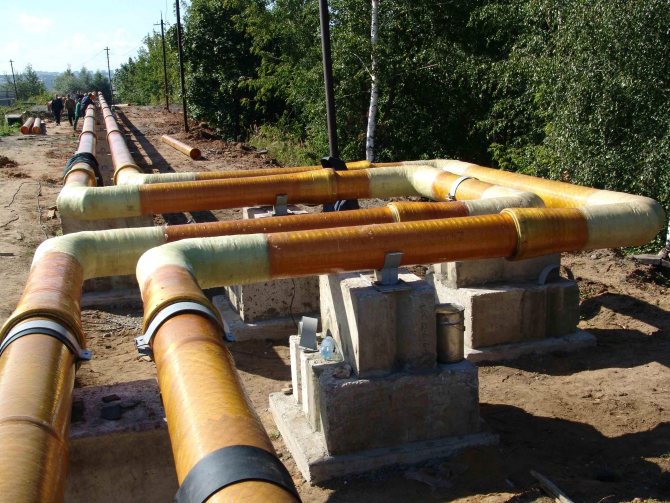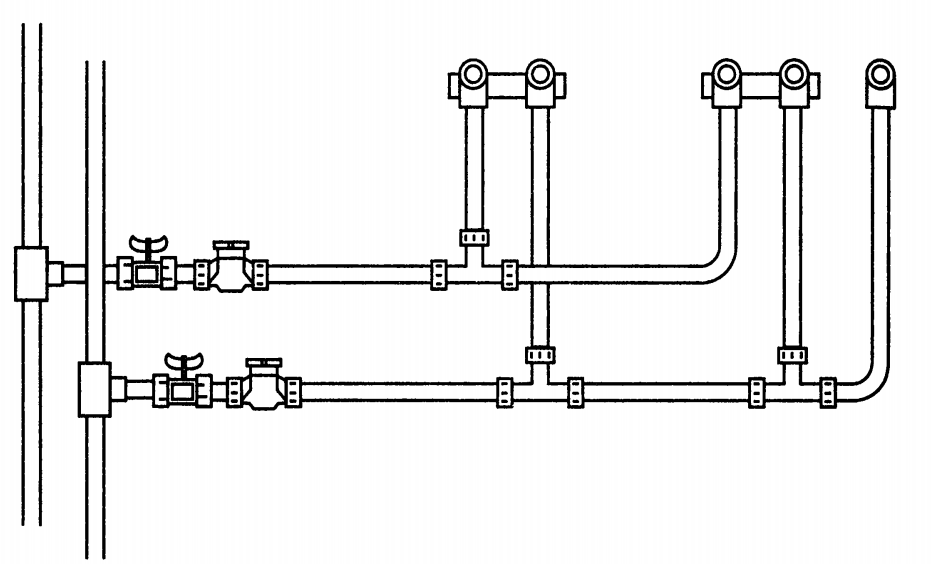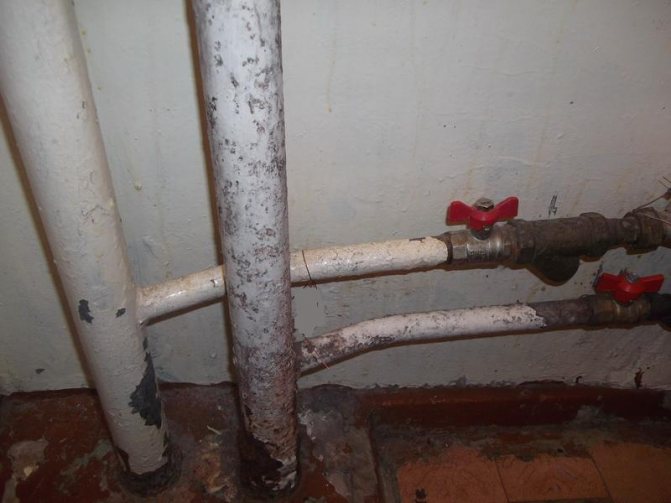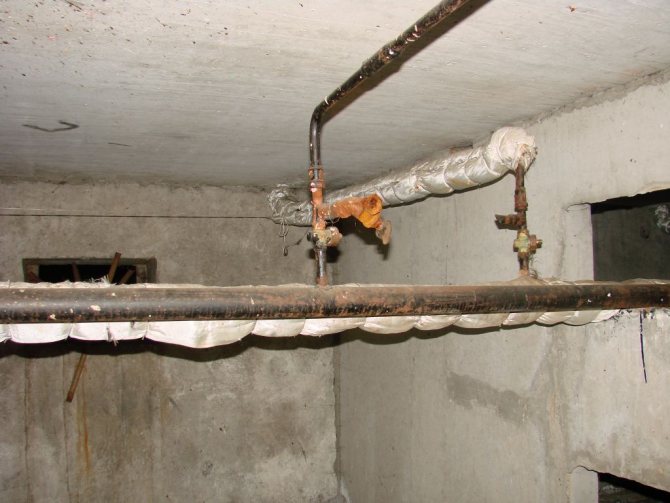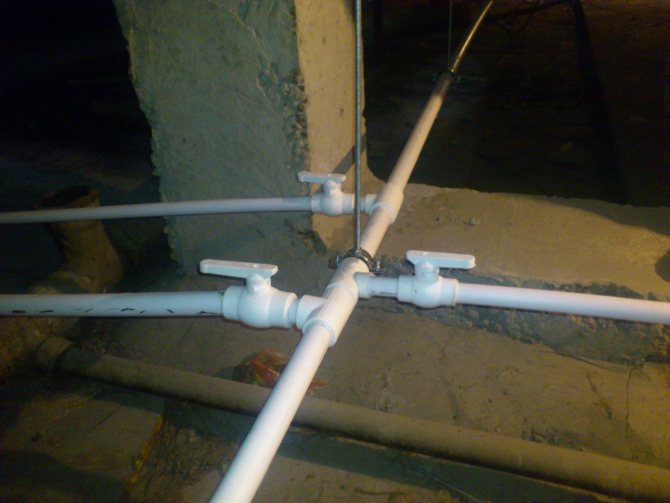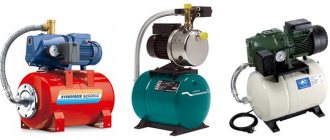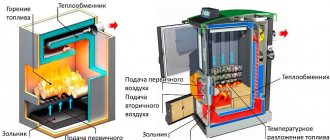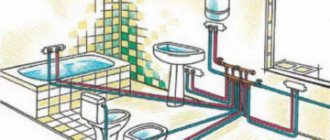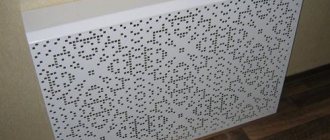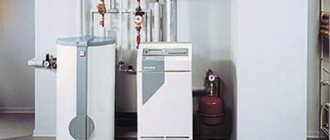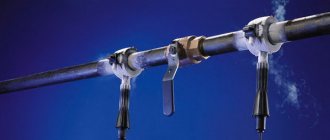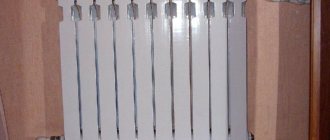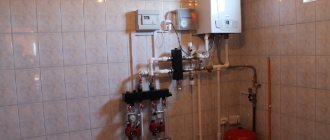Water objects
Anastasia Zemlyanichko 06/02/2018 no comments
0
(18 estimates, average: 4,11 out of 5)
- 1 Action plan
- 2 Source of water intake 2.1 Centralized water supply
- 2.2 If the source of water is a well or borehole
- 3.1 How to make water inlet
- 4.1 Serial connection
Not all private households have running water. Sometimes there is no centralized water supply even down the street. So residents in such settlements use either common wells, or wells located in their yard. But we live in a time when water supply and sewerage in the house is not a luxury, but a necessity. Thanks to the plumbing in the house, you no longer need to waste time fetching water. It can be used for other equally important activities.
Therefore, in this article, we will talk about how to supply water to a private house and correctly lay a water supply system through it. Let's look at these questions step by step.
Action plan
- Determine the source of water intake (where you will need to supply water: well, well, centralized water supply)
- Determine what material will be used to enter the water supply into a private house and water supply distribution inside the house
- Determine the places of water consumers (washstand, washing machine, bathroom, toilet, and so on)
- Draw a diagram of the future water conduit
- Determine your financial resources (it depends on who will do the work and from what material the water supply will be wired).
These actions will be enough to bring water into the house without complicating this process.
Output
The routing of pipes in the bathroom and in the kitchen, thanks to modern materials, can be done independently, without the help of specialists. The main thing is to correctly plan and use pipes that are suitable in diameter.
As for the choice of the type of wiring, it is impossible to give unequivocal advice, since in each individual case one or another option may be the most appropriate. You can get more information on this topic from the video in this article.
Did you like the article? Subscribe to our channel Yandex.Zen
Water intake source
The water source can be centralized plumbing, well, well, lake or river... Several sources can be used, for example, a well and a centralized water supply. But now we will only discuss the first three.
Centralized water supply
To make the input of water into the house from a centralized water supply system, you first need to agree on the issues of the tie-in with the authorities that are responsible for this water supply system. Then we make the connection using a clamp of the appropriate diameter.
It is better to make an inspection well at the connection point. So it will be possible to inspect and audit the connection point. We mount in the clamp emergency shut-off valve, preferably with a collapsible connection, so that it can be easily replaced in case of failure. Well, then we lay the pipe and connect it to the emergency tap.
If the source of water is a well or well
In both cases, pumping equipment is required. If the depth of the well is small, then a pumping station can be used. And if the depth exceeds the technical characteristics of pumping stations, then, as for a well, it is better to use submersible pumps.
A pumping station is usually equipped with an electric motor with a pump attached to it, a hydraulic accumulator (also known as a receiver), a pressure gauge, and a mechanical automatic switch on the electric pump.
For submersible pumps, the hydraulic accumulator, automation and pressure gauge must be installed independently.
General rules
General rules for the distribution of water supply and sewerage in residential buildings are contained in SP 30.13330.2016.
We present the key points of the set of rules:
- The temperature of hot water on plumbing fixtures should be within the range of 60-65 ° C, regardless of the method of its preparation (by taking it from the heating network, heating in heat exchangers or local heating devices);
It is curious: in the joint venture, adopted only four years earlier, on 30.13330.2012, the maximum permissible DHW temperature was indicated at + 75 ° С.
- The composition of water (including hot water) and its quality must meet the requirements of SanPiN 2.1.4.1074 "Drinking water";
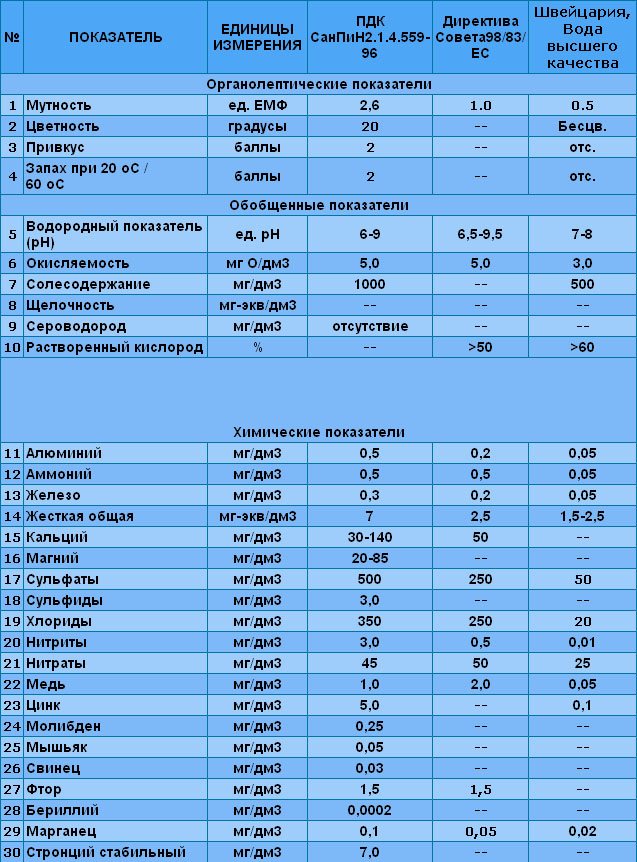
Water quality standards
- Urinals and toilet cisterns can be supplied with lower quality water;
Please note: this item is relevant mainly for owners of cottages with autonomous water supply systems. As far as the author of the article is aware, there are no main pipelines with non-potable water in our country, as a class.
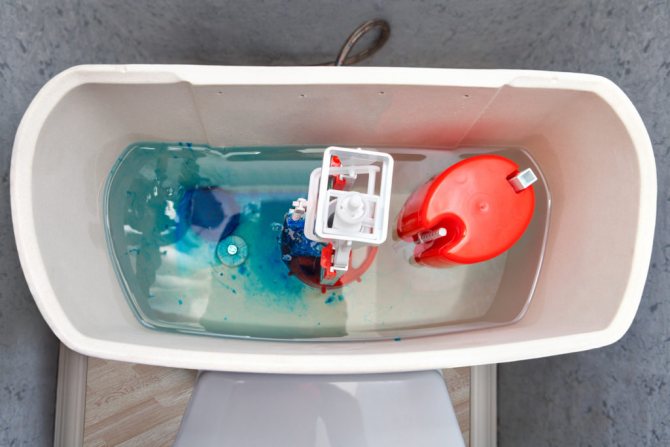

Untreated water can be dispensed to the cistern
- The maximum allowable water pressure on the plumbing fixture is 4.5 atmospheres. It can be increased to 6 atmospheres if a low-rise residential building was built in a multi-storey building. If the specified values are exceeded, it is necessary to use a pressure regulating valve;
By the way: the previous version of the joint venture set the minimum permissible pressure equal to that specified in the technical documentation of the plumbing equipment (if such information is not available, equal to 20 meters, which corresponds to 2 atmospheres of pressure). In 30.13330.2016 there are no restrictions on the minimum pressure.
- Cold water pipes laid in mines, niches, plumbing cabins and wet rooms should be insulated to prevent water condensation on their surface;


Insulation reduces condensation
- The DHW system should provide for the circulation of water to maintain its stable temperature at the points of analysis;
- Water heated towel rails can be connected to DHW circulation pipelines only if a bypass and shut-off valves are installed. Where this is not possible, water appliances are replaced by electrical ones;
- DHW pipes (except for connections) must be insulated to reduce heat loss;


Basement Hot Fill Insulation
- The horizontal wiring of the water supply system of a residential building should be carried out in basements, technical floors and attics. In their absence, it is permissible to lay pipes in underground channels together with pipelines of the heating system, under a flooring floor with a removable cover, as well as on the ceilings of non-residential premises on the upper floor of the house;
- Risers and water inlets to apartments should be installed in shafts with the arrangement of technical cabinets with hatches for free access to them. Open distribution of risers on the walls of kitchens, baths, toilets and closets is allowed;


Water supply stands in the bathroom niche
- Water-folding fittings (mixers, toilet cisterns, etc.) can be connected with autonomous connections using an apartment collector or to a common supply using tee connections;
- Threaded connections of steel pipelines must not be installed hidden. The only exceptions are corners and water sockets for mounting a wall mixer;
- It is possible to lay water supply and sewerage pipes together only in through channels, while the waste pipe is attached below the pressure pipe;
- When laying hot water and cold water pipelines together, the cold pipe is attached below the hot one;


Hot pipe - at the top, cold - at the bottom
- Horizontal distribution of cold water supply and hot water supply should be performed with a slope of at least 0.002 (in cramped conditions - 0.001);
Hint: The slope will allow the water to drain completely during repairs and to prevent pipe defrosting. The instructions regarding the slope of the gasket apply only to inlets and outlets: the connections to individual devices can be fixed horizontally.
- Water can be diluted in rooms with a temperature that does not fall below + 2 ° C.In colder rooms, the water supply is supplied with cable heating or thermal support;


Open water pipe section with cable heating
- Near entrance doors, gates and windows that open in the cold season, pipes must be thermally insulated;
- Fittings and pipes must comply with current hygiene standards;
- Fittings and pipes used in internal water supply systems must serve at least 50 years at + 20 ° С and 25 at + 75 ° С and standard pressure;
It is curious: in the previous version of the document there was a clause according to which the hydraulic resistance of the pipeline could not change during its service life, which put a bold cross on gas pipes overgrown with rust GOST 3262-75. There is no corresponding clause in SP 30.13330.2016; however, this does not cancel the ban on the use of gas pipes: they do not meet the standard service life of the water supply system.


Twenty Years On: Steel Water Risers Two Decades After Home Delivery
- Inlets, risers of 3 floors and above, connections with 5 or more points of water parsing, connections to tanks and water heaters must be equipped with shut-off valves;
By the way: when connecting several DHW risers with a circulation bridge, each of them is supplied with taps at the base and on the upper floor.
- A pressure reducer is installed at the entrance to an apartment or cottage after a valve or tap and filter, but before the water meter;
Note: an innovation was the refusal to install pressure gauges before and after the gearbox (it was previously recommended) and the adjustment of the gearbox by the owner of the home (it was not encouraged, but it was not forbidden either).


Now the gearbox can be installed without pressure gauges
- Check valves are needed in front of the group mixers and at the connection of the water heater to the circulation pipe. Previously, it was recommended to install the valve at the inlets to the apartment of hot and cold water in order to avoid reverse flow of meters;
However: the water supplier selling it to the homeowner still has the right to demand the installation of a meter with a check valve, but only after agreement with local authorities.
- Automatic air vents should be installed at the upper points of the hot water supply and cold water supply pipes, at the lower points - air vents.


Discharges at the bottom of the filling
However: to bleed air and discharge water, it is not forbidden to use water fittings on the outer floors.
Metering devices
- Entrances to buildings and their separate premises, which have their own owner or responsible tenant, are supplied with metering devices;
- Parsing cold and hot water is counted separately;
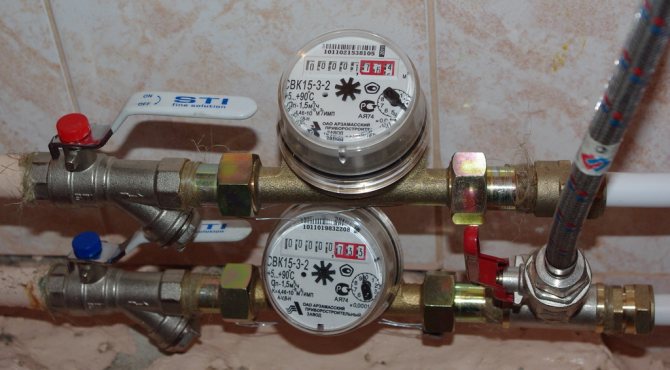

Counters at the inlets of hot and cold water to the apartment
Captain Obviously tells: this does not apply to the preparation of hot water in individual water heaters. In this case, the homeowner receives only cold water from the main water supply and pays separately for the energy consumption by an electric or gas meter.
- When installing meters on the supply and circulation pipelines of hot water supply, the latter is supplied with a check valve;
- There must be a filter in front of each meter in the direction of water flow;
- General metering devices can be installed inside the building, in illuminated rooms with a temperature of + 5 ° C and above, or in wells. In the latter case, meters are used that can work during flooding;


Water meter in the basement of an apartment building
- General water meters are supplied with shut-off valves before and after the meter, apartment (including single-family residential buildings) - only up to the meter.
What material to choose for input
Exists several pipe options for the organization of water supply in the house, but it is the polypropylene pipe that has proven itself well. The service life is designed for fifty years, it does not oxidize, it can withstand pressure loads, and is easy to install.
In terms of technical characteristics, such a pipe is inferior only to a copper pipe, but the price smooths out this drawback.
It is important to pay attention to the diameter of the inlet pipe. It depends on how comfortable you will be using your water supply system.
It is better to use a pipe for input diameter 32 mm... It is slightly more expensive than a 25 mm pipe, but it will have a good supply of throughput, and this will play an important role in the future when there is a need to add consumption points. Also, it is better to mount a pipe that can withstand a pressure of 10 atmospheres.
How to make water inlet
First, you need to determine the place where you will lead the pipe into the house. Then you dig a trench from the house to the place of the water source. The depth of the trench directly depends on the area in which you live. The more the soil freezes during winter frosts, the deeper the trench should be. Sometimes, to make the depth of the trench less, the pipe is insulated. Each layer of such insulation reduces the depth of the trench by 20 centimeters.
How to connect to the central water supply was described above. Well, how to bring water into the house from a well? A pumping station, even the most powerful, may not always be enough. It all depends on the distance of the well from the house. Therefore, not far from him make a caisson and a pumping station is installed in it.
A suction pipe is lowered into the well at the level of the trench. Then the pipe is laid horizontally to the caisson, and there it is connected to the pumping station. After the pipe is laid to the house.
Unlike a well, water intake from a well does not require the manufacture of a caisson, since the well can be located both under the house building and outside it. But in any case, the accumulator and everything else can be mounted either in the basement, or next to the water inlet. A water supply pipe from a well can be carried out in the same way as water from a well is carried out.
In all cases, the polypropylene pipe should be covered with a small layer of sand before filling it with soil excavated from the trench. This will prevent damage to the pipe when backfilling.
At the beginning of work, you need to make a diagram of the location of your communications across the territory.
After we figured it out, how to bring water into the house, let's talk about the possibilities of distributing water supply around the house.
We develop a water supply scheme
In fact, there are an abundance of water supply circuits, but there are two different methods for connecting consumers:
- Tee connection.
- Collector or parallel connection.
For residents of small private houses, daisy chain connection will meet their needs, the plan for such water supply is simpler. From the source itself, water flows in order from one consumer to the next from one pipeline with a tee outlet (1 inlet, 2 outlets) for each consumer.
Such a switching scheme is distinguished by a lack of pressure at the last consumer, during the start of the previous ones, if several such links are involved in the chain.
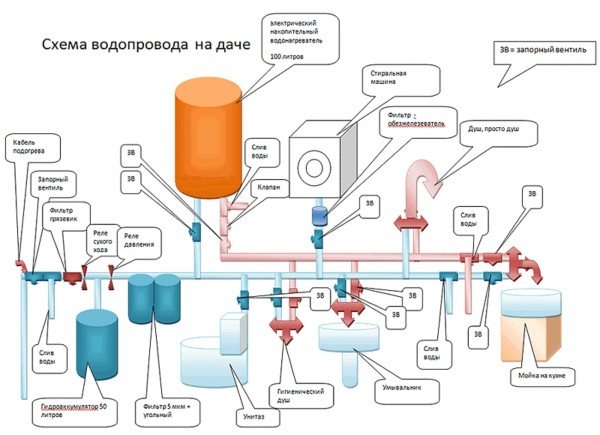

The collector connection plan looks fundamentally different.
At first, when making such a connection, you will need a collector... A water supply system is laid from it directly to each consumer. Thereby you can create more or less the same pressure at any link in the pipeline chain... Note that a serial connection will cost you more.
Any water supply system consists of a well, a pump, a hydraulic accumulator to protect the pump... And, if desired, a filter or several filters before or after the accumulator.
Plumbing pipes are of several types, the most common materials for them are polypropylene, polyethylene (cross-linked), steel. The most expensive ones are made of copper, since they last the longest.
If you mount them, you will have to call a specialist. The best choice is polypropylene in terms of price-quality ratio... Please note that plastic as a material is absolutely not suitable, since it releases harmful elements into the water.
The diameter of the pipe depends on the length of the pipeline of a private house: from 30 meters, material with a diameter of 25 mm is enough, if more than 30 meters, then 32 mm will do, and in the case when the length is less than 10 meters, the diameter varies within 16-20mm.
Further down the list you will need a submersible pump because it is more durable and more efficient than a pumping station... The height of the pump is measured together with the hose and then they are connected by a threaded connection. The pump can be positioned in any position with stainless steel cables. It is suspended from the top of the well.
Water from the pump enters the filter up to the accumulator, which is the next element of the circuit. It creates a stable pressure and allows you to turn the pump on and off as needed... The volume depends on the amount of water consumed.
The water is filtered again and divided into two streams: one of them goes to the boiler and heats up, and the second will remain cold in the collector.
It is necessary to install shut-off valves up to the collector, as well as install a drain cock.
The pipe going to the water heater is equipped with a fuse, an expansion tank, and a drain valve is installed. Same the tap is mounted at the outlet of the water heater, and after that the pipe is connected to the hot water manifold and then divorced at all points in the house.
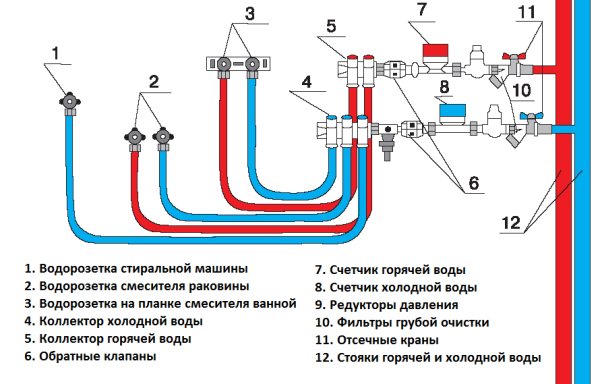

Boilers can be different. Water can be heated with gas or electricity. A gas instantaneous water heater differs from an electric one in that the water is constantly heated.
Plumbing deserves special mention... The process of connecting the toilet begins with the installation of a corrugated pipe, which is lubricated with silicone at the junction. Next, the reliability of the connection is checked, holes are drilled into which the dowels are inserted. The toilet is attached to the corrugation and twisted.
Do you know how to choose pipes for plumbing in a private house? Read the advantages and disadvantages of copper pipe fittings for the pipeline here.
Modern PVC pipes and fittings are in no way inferior to other materials, find out more at https://klimatlab.com/vodosnabzhenie/vodoprovod/pvx-truby-i-fitingi.html
Water distribution in a private house
Regardless of where your water was supplied from, whether from a well or a well, or from a central water supply, there must be an emergency shut-off valve at the input. After it, a water meter is installed, if you are connected to a centralized water supply.
Then the input from the well or well is connected if you have a combined water connection. This is followed by the outlet of cold water for irrigation or for household needs. Next, the filter unit is mounted. What and how many of them will be determined depending on water quality.
After the filter unit, a hydraulic accumulator and automatic well pump activation are mounted. Here is such a primary circuit, mounted immediately after entering the water. Now it's time to choose one scheme from several options for laying a water supply system in a private house.
A private house, in contrast to an apartment, has a wider range of possibilities with regard to the water supply inside it. Here you can use the serial connection of water consumers. It is also called a tee. Or you can use a collector circuit for connecting consumers. Let's take a look at these two schemes.
Serial connection
This scheme includes a series connection of consumers. Washstand, shower, toilet, as well as everything in the kitchen is connected in series, one after the other. The advantage is that a small amount of pipe is needed. But there is also disadvantage of this system.
In the case of simultaneous use of consumers, the pressure drops at distant points of consumption. This is especially felt when the shower is in operation: it is very difficult to regulate the temperature of the water. This is where the inconveniences of this scheme are manifested. Such a system is more suitable for a family with a small number of people.
Collector connection
This scheme for connecting consumers requires a larger number of pipes, which means that the water supply project becomes more expensive. The essence of this system is that after the primary circuit, collectors for cold and hot water are mounted at the input, and from them pipes are already laid to each individual consumer.
Such a system allows the simultaneous use of water in different places of consumption: in the kitchen, in the shower, and so on. From this it follows that such a scheme is better for comfortable use and suitable for any family.
Sometimes, in order to reduce the cost of the project, but at the same time, to get maximum comfort, these two systems are combined. This works well too.
The main elements of the water supply circuit
The easiest option is to connect the water supply to the central water supply system. In this case, you can get by with a minimum number of additional devices, but to create a modern water supply system, you need to know how to connect a water supply system to a private house, what devices are necessary for the correct connection.
For any water supply connection schemes, they include the following elements:
- Pumping station or pump (if an artesian well or a well is used as a source). How to choose a water pump for your home plumbing can be read here.
- A hydraulic accumulator is installed to accumulate water.
- Installation of filters is required for water purification.
- After water-purifying filters, it is desirable to install a tee with a water outlet for hot water supply.
- Collector for distributing water to sampling points. Each outlet of the collector must be supplied with shut-off valves.
- The outlet from the tee after the filter for hot water supply is connected with a pipe to a water heating source.
- To organize a hot water supply system (hot water supply system), a pipe from a water heating source is connected to a hot water collector for subsequent distribution to consumers.
- It is possible to connect, install pressure sensors and automatic control of a pump that supplies water from a well or well.
Internal water pipe
There are several options: copper, polypropylene, metal-plastic and steel. Consider the main characteristics.
- Copper pipe does not undergo oxidation, therefore it does not rot, withstands high pressure, microbes do not start in it, it does not overgrow from various deposits like a steel pipe. When freezing, it stretches, and does not burst, this preserves the integrity of the pipe. The wall thickness of the pipe is only one millimeter, which makes it possible to use a pipe with a smaller outer diameter with the required internal section. The disadvantage is the price of both the pipe itself and the fittings.
- The polypropylene pipe is quite durable, has good characteristics, the pipe material does not corrode, and has good throughput. A reinforced polypropylene pipe has been created for hot water. During installation, these pipes can be hidden in the walls.
- Reinforced-plastic pipes have an aluminum base, inside they are polypropylene, and outside they are plastic. They also do not corrode, but are afraid of ultraviolet radiation. It is better not to use for hot water, they are deformed at high temperatures.
- Steel pipes are strong enough, but installation is rather difficult. Corroded. During operation, they need to be in open places.
The pipe must be selected depending on your financial capabilities, as well as on the technical parameters of the circuits that you use at home. Especially important use quality materials in critical places of distribution of water supply.
0
(18 estimates, average: 4,11 out of 5)
Back to
Shower trample: product features, principle of operation and reviews
STILL
Pipe laying
As mentioned above, there are two options for routing the pipeline:
- Hidden - pipes are embedded in the wall;
- Open - the pipeline remains in sight.
Now let's take a closer look at the advantages of the disadvantages of each type.
Hidden wiring
This wiring option is great for small rooms, where every square centimeter of usable area counts.
Among the advantages of flush-mounted installation are the following points:
- Due to the fact that the pipeline is hidden from view, the room takes on a neat, more aesthetic appearance.
- The ability to arrange furniture close to the walls.
- In case of fire, the water supply will not be damaged.
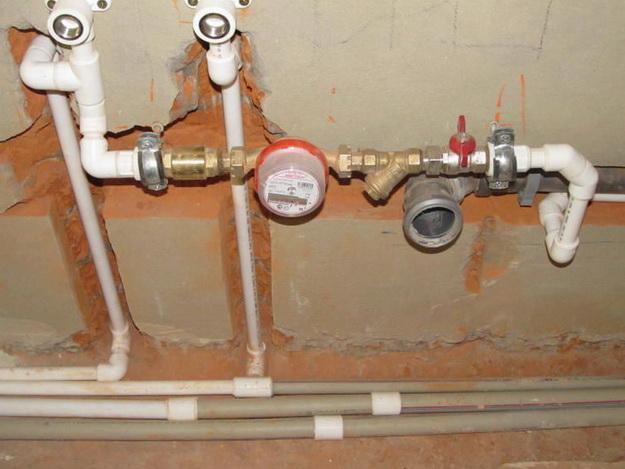

Performing hidden routing in strobes
Along with the advantages, this layout option has some disadvantages:
- The choice of pipeline material is limited, since collapsible connections cannot be built into the wall. For example, it is allowed to lay out polypropylene pipes or polyethylene pipes, the connection of which is carried out by welding.
- Labor intensity of work - wall chipping is not only long, but also quite difficult and dusty.
- Complexity of pipeline installation - it must be assembled as accurately as possible, strictly under the executed grooves.
- To carry out repair work, you need to destroy the wall decoration.
Thus, it is not always advisable to hide the wiring in the walls.
Open wiring
Open installation has a number of advantages over hidden installation:
- The ability to mount any kind of pipeline;
- Installation is less laborious;
- Easy dismantling;
- The ability to monitor the state of the structure.


In the photo - open water supply
Disadvantages of an open water supply system:
- Unattractive appearance.
- Reducing the usable area.
- In the event of a fire, the plastic can be damaged.
Advice! If the plumbing is installed in an open way, it can be hidden using pipe boxes.
As a result, everyone has to make the choice himself, depending on individual conditions.


Hot and cold tee piping diagram
Types of pipe routing
There are several ways to lay a water supply system, they depend on the characteristics of the room and the number of plumbing fixtures.
Collector piping
A separate pipeline is laid to each consumer from the riser.
This wiring diagram has practically no drawbacks, the water pressure remains stable in all plumbing fixtures.
In the water supply system, the diameter of the pipes matters. Risers are usually laid with a pipe with a diameter of 25 or 32 mm. If you lead pipes with sequential wiring, then they should be 20 mm in diameter, and the connection to the consumer with a smaller diameter - 16 mm. The piping through the collector can be laid with one diameter of 16 mm.
Tee piping (in series)
A sequential scheme is preferable in compact rooms where there is no long pipeline length, few connection points located at a short distance from each other. A main pipeline is laid from the riser, to which plumbing fixtures are connected using tees.
There are disadvantages of this water supply distribution: unstable pressure during operation of several consumers.
It is not recommended to use reinforced plastic pipes.
Types and classification of polypropylene pipes
The material for polypropylene pipes is an organic polymer. Under the influence of high temperature, it becomes plastic, without heating, durable and stiff. Chemically inactive, which allows use in pipelines for food purposes.
Polypropylene pipes are simple and multi-layer. They differ in the chemical composition of the polymer and the design of the walls.
Polypropylene pipes in one layer
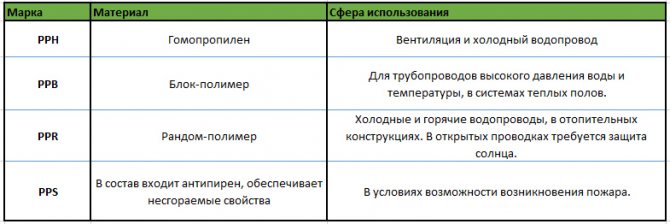

Multilayer pipes have a reinforcing layer of foil, fiberglass, aluminum in their construction.
Classification of multilayer polypropylene pipes






